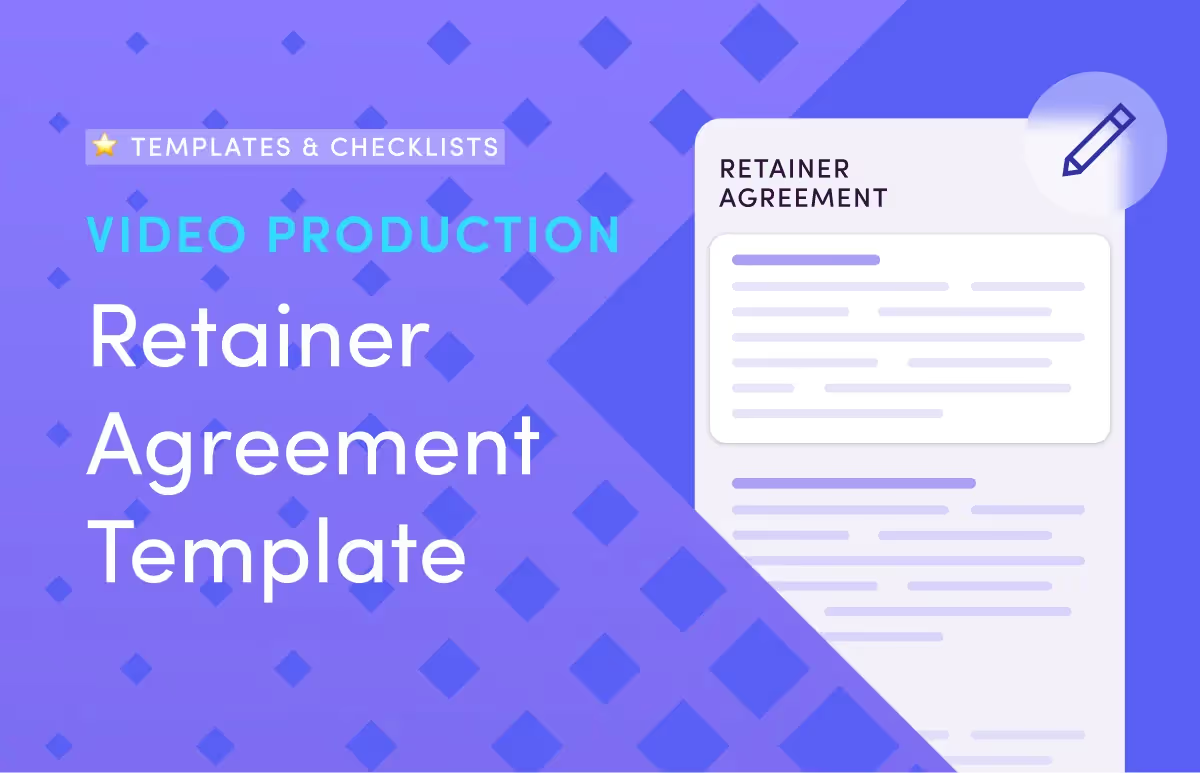

A retainer agreement communicates your services to your clients. It helps them understand the video production services you offer and other relevant terms and conditions to guide your contract period.
In this guide, I’ll share why you need a video production retainer agreement and how to write one.
A retainer agreement is a contract between you (a video producer, director, videographer, editor, or production agency) and a client. It clarifies your responsibilities towards a project— marketing ads, corporate videos, short social media content— and your client's responsibility in terms of payment, indemnity, and others.
Retainers are different from one-off projects. These agreements ensure you have steady work and are paid on a recurring basis.
It's easy for your clients to expect more than you (intend to) offer. This happens NOT because you didn't communicate your services and responsibilities during your negotiations. It's because the terms they agreed to weren't documented, and verbal agreements aren't always reliable. Here are more reasons why you should have a contract:
You may have agreed on pre-production and post-production phases without the nuances of costuming or animation effects. Anything outside the typical shooting, sounds, lightning, and basic editing is outside the scope of the agreement. A retainer agreement helps you state this to avoid any misunderstanding later.
It also helps you clarify deliverables and deadlines throughout the time of the contract.
For example, your agreement may cover producing a monthly promotional video for a client's YouTube channel, but the client might also ask you to produce a YouTube Short for experimental purposes (even after meeting up with the month’s deliverables). You can handle this task, but you should be paid for it, and you can use your contract to communicate that.
.avif)
A retainer agreement may seem unnecessary at first, especially if you've already spoken to your client over a call or an organized meeting. Several things could go wrong without a retainer agreement, including:
ManyRequests has an add-on service feature to bill for these extra tasks. When your clients make extra requests that weren't part of the initial agreement, you can create an add-on service to let them know what the service will entail and how you'll bill for it.

This ensures you’re paid for everything you do to compensate for your skills and efforts.
Your agreement must include these essential clauses:
Video production often has high costs, so ensure you account for those. This means you may need upfront payment or milestone-based billing to offset the financial toll of planning a video.
Document your basic needs based on the complexity of the project so your client knows what to expect and what their financial responsibilities are.
Include a clause on late payment, write that failure to pay on the agreed date is a breach of contract, and include a penalty for this breach. The penalty could be a $25 increase for every week that your money is not paid. If the client delays your payment for no reason, read this guide on what to do when a client doesn't pay.
Also, add the conditions for renewals and termination—clarify how either party can terminate the agreement and what notice period is required to terminate the contract. The notice period is usually 30 days.
Communicate your expectations to help them know their role in increasing outcomes.
These are some tips that could be useful when writing your video production retainer agreement:
Rather than write, “The service provider will produce videos,.” Write, “the service provider will create and edit three 5-minute promotional videos and cater to the shooting, scriptwriting and editing phases.” Be more specific when you're writing yours to include everything you need to do.
For instance, write that “the Service Provider will provide two rounds of edits. Any additional edit requests will incur extra fees.”
You can also use the chat feature on ManyRequests. This platform allows you to onboard clients, chat with them, and manage their projects and your team members on a single dashboard. See an example here:

To explore more features and how they can be helpful, sign up for a 14-day free trial here.
To customize:
A video production retainer agreement gives you a solid foundation for your relationship with clients. It helps you set clear expectations, define deliverables, and get consistent payment for your work.
If you want to manage client onboarding and workflow, use the ManyRequests client portal. It's a simple, efficient tool that other agency owners use to handle client management, project management, communications, and invoices. James Albert, the co-founder of DesignGuru, says, “One of our differentiation factors was having a dedicated client portal. It makes it simple to manage all our clients' deisgn jobs in one place“ and that they’re a big fan.
Sign up for a free 14-day trial to learn how it works. If you need help using any feature, visit our help center.